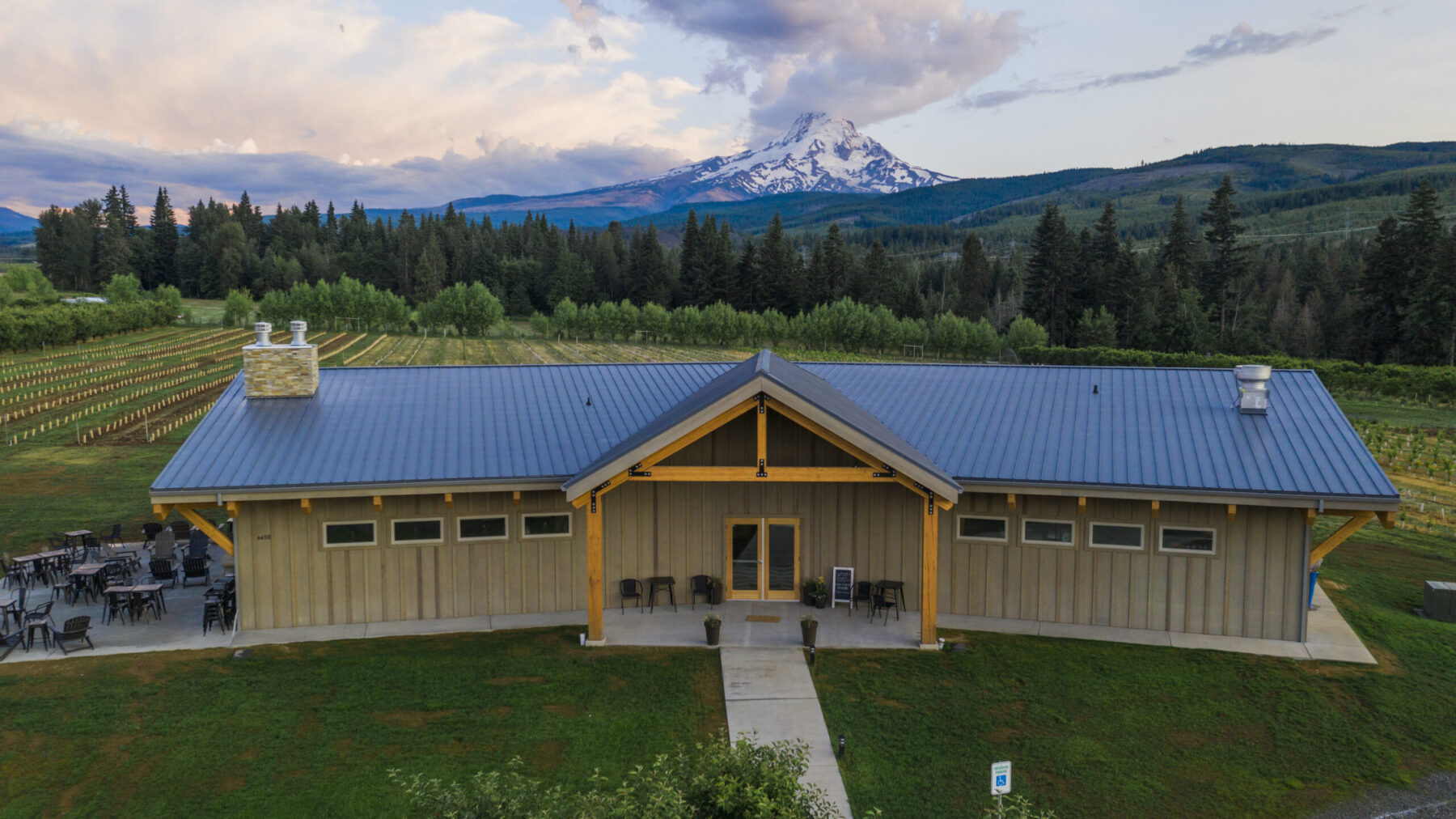The Changing Landscape of an Oregon Farmland
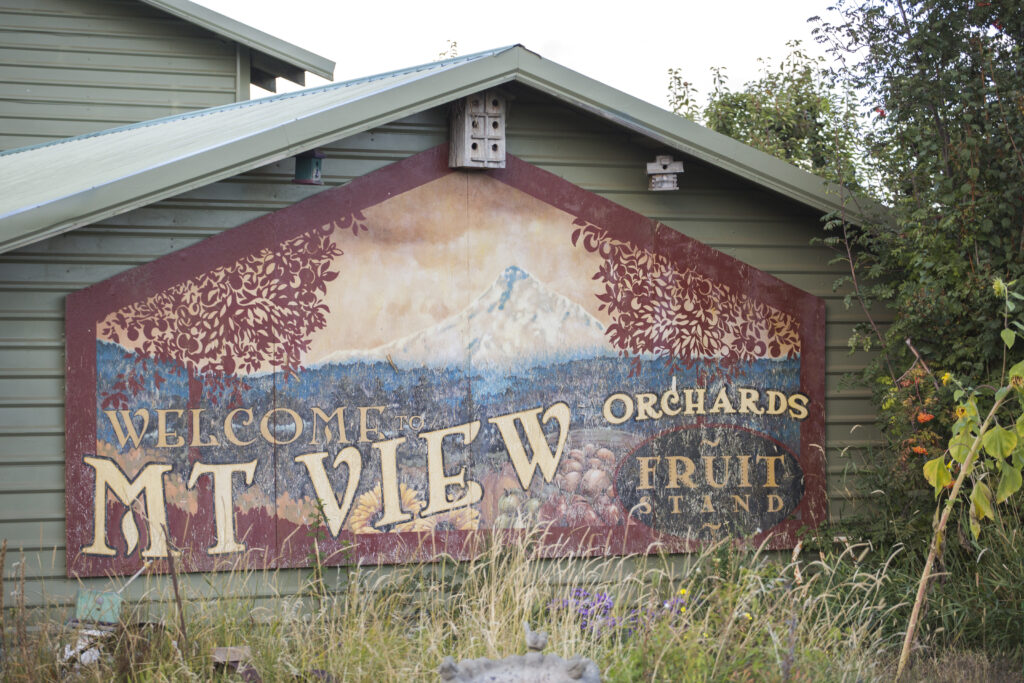
The Columbia River Gorge has been known for agriculture since the first commercial orchard was planted in Hood River County in 1876. Today, the valley is a top producer of tree fruit including pears, apples, and cherries and for decades, the bulk of these products has been destined for national and international markets.
The fruit export industry is not what it used to be. Tariffs have brought the profit on a bin of apples (roughly 1,000 pounds) from about $300 to just $21. A recent study published by Oregon State University found that the average annual net return on one acre of cherries is now just $1,227. According to the 2017 Census of Agriculture, the average size of a farm in Hood River is just 49 acres: That would equal about $60,000 profit a year for cherries assuming the growing conditioners are perfect. This is not enough for a family or even a single farmer in a place where the cost of living is higher than the national average.
A Changing Community
Hood River County (pop. 24,057) is now classified as an Exurb in the American Communities Project. (Previously, it was considered a Hispanic Center, a county type known for younger Hispanic populations, agriculture, and lower incomes.) On the far edges of urban areas, Exurbs have rural and suburban elements. They are affluent with a median household income of $80,300 and less diverse than their more urban counterparts, Urban Suburbs and Big Cities. Among Exurbs, Hood River County stands out for having a sizable Hispanic population of 32%. Overall, Exurbs have seen a fast-growing child population since the 2010 census. In Hood River County, 23% of the population is under 18 and the child poverty rate is 13%, below the national rate of 17%. The median household income is $70,900. The community’s changing socioeconomic picture is evident in the farming profession.
Most years farmers here face some challenges, include crop damage from hail and smoke, labor shortages, crop disease, volatile geopolitics that impact sales and extreme heat: In the 2021 Pacific Northwest heat dome, cherries literally cooked on the trees. Even bumper crop years like this one pose challenges: Cherries are currently selling to retailers at just 60 cents per pound instead of the usual $2.50-$3.00 range because the market is flooded. This means some growers can’t even break even after harvesting and processing, so perfect cherries are left on the trees to fall to the ground in waste.
To survive, some orchard owners have had to diversify farm income by removing fruit trees and replacing them with higher value crops like grapes for wine production, or cider apples for hard cider. Others are adding wedding venues, wine tasting rooms, breweries, and farm-to-table dinners, experiences that would appeal to people with more disposable incomes. Owners are also adding new varieties of fruit trees that can be picked mechanically rather than relying on farm workers. All these new business models face pushback from neighbors, elected officials, and groups dedicated to farmland preservation.
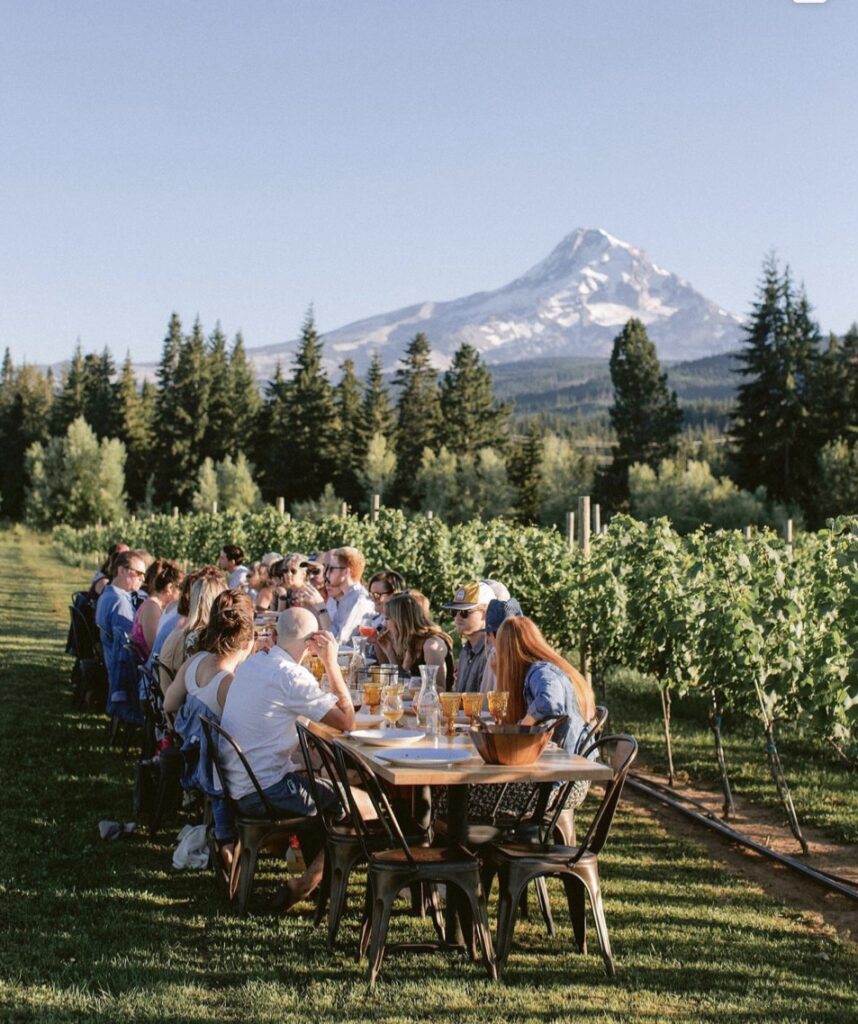
Navigating Complexity
Gorge Grown Food Network, a nonprofit dedicated to building a resilient, inclusive local food system that improves the health and well-being of the community, aims to hold a space where the community can navigate the complexity of these changes in the region. We convene a bi-state group dedicated to farmland preservation and land access that includes national leaders like the American Farmland Trust, Oregon Agriculture Trust, Raices Cooperative Farm, and about 15 other organizations who work in both Oregon and Washington state. The group focuses on their common goal to keep as much farmland in production as possible, and to support farming families in an increasingly challenging industry.
I find myself wondering, what does that look like in a changing climate and unstable export industry? Do we want to see small family farms consolidated into the hands of a few, because the only scale that works for exporting fruit now requires hundreds or thousands of acres? So far Hood River Valley farms are predominantly still run by local families, not owned by large corporations like nearby Yakima Valley. Do we want farmland to be paved for scenic venues? Not without regulation, but some of our most beloved small family farms would be bankrupt without their wedding venue income. Do we want to see all fruit trees removed and replaced with wine grapes? No, but we love a glass of local wine.
The orchards help keep farmland productive, and restrictions on what can be done on farmland protect it from development, zoning changes, billboards, and resorts. But many of the monoculture orchards require inputs that are not so bucolic: fungicides, herbicides, underpaid labor, water from melting glaciers, high fences to keep out wildlife like elk, and fossil fuel powered fans to mitigate frost. Ironically, many orchard workers are food insecure (53%, according to a survey by the Columbia Gorge Health Council). Agricultural chemicals contribute to the pollution of the Columbia River — health agencies recommend consuming less than eight servings of local salmon a month, in a place where indigenous people have been eating at least one serving of fish a day for millennia.
A Farmer’s Innovations
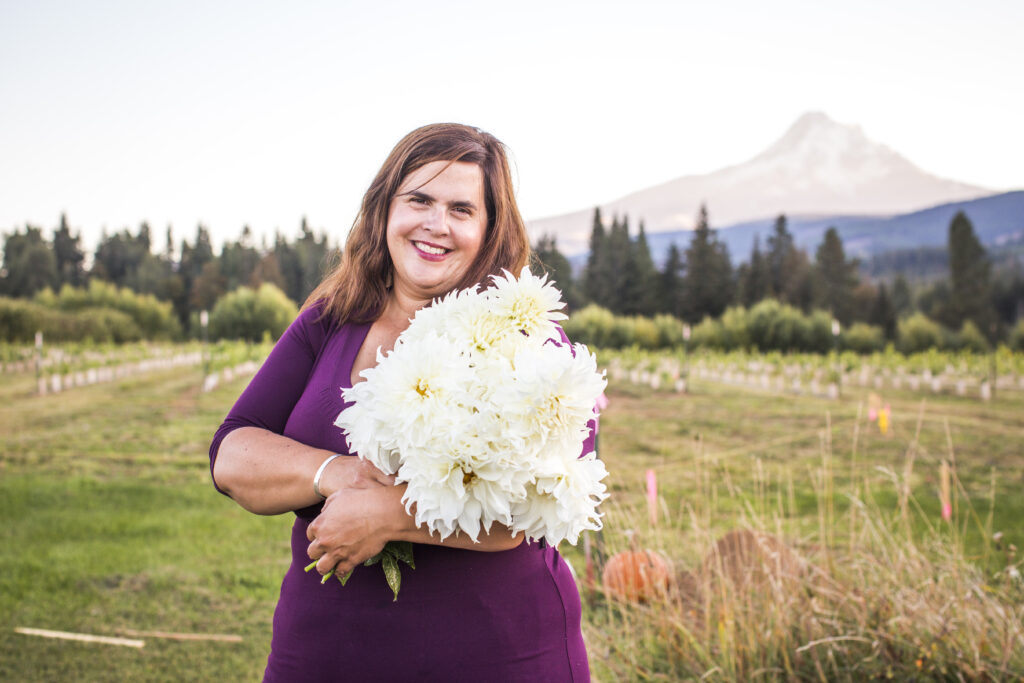
Katrina (Trina) McAlexander is a third-generation farmer near Parkdale, Oregon, at Mt. View Orchards. Her grandparents emigrated from Switzerland in the 1920s and planted fruit trees with strawberries and asparagus growing beneath them to produce multiple crops each year. One of Trina’s fondest childhood memories is making strawberry jam with her mother to sell at their now 100-year-old farmstand. Katrina knew from the time she was a little girl that she wanted to carry on her family’s farming tradition. She became a nurse practitioner to secure the income she needed to keep the farm going and enable her parents to retire — just in time.
By 2014, the income the McAlexanders were earning by selling their pears to international markets was not enough to sustain the family and or even pay the land taxes. Trina knew she had to innovate. She built a venue for weddings with an epic view of the mountain, then planted wine grapes and opened a winery called Grateful Vineyard. Next came the microbrewery, the U-pick flowers, the pandemic, and pushback from some neighbors and other competitive business owners. Trina’s business plan was scrutinized, and she was threatened with lawsuits, even though she followed building codes, secured permits, and complied with the law as she tried to save their 51-acre farm.
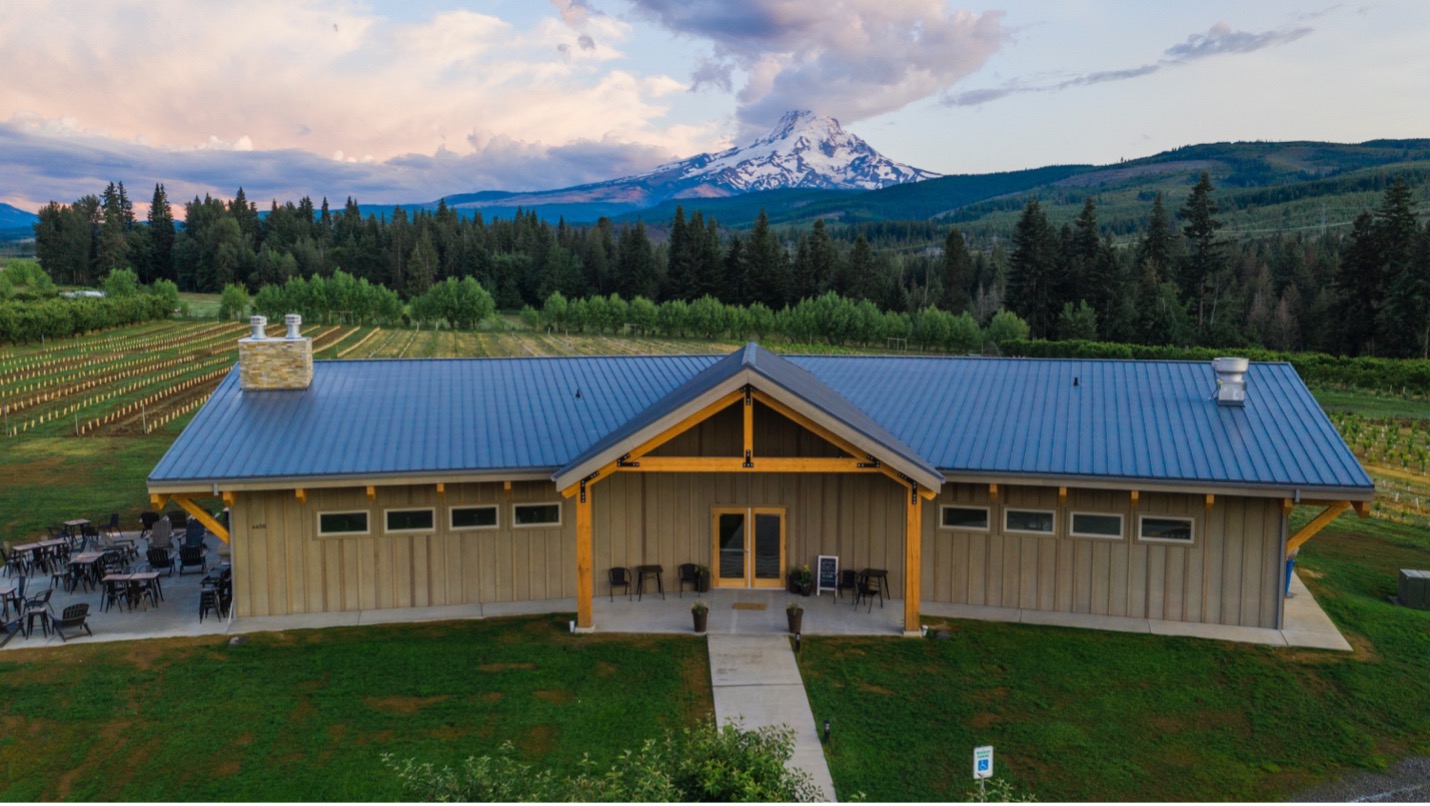

“I hope someone in my family is farming our land indefinitely, which is why I have made the intentional decision to farm very differently than others in Hood River,” Trina says. “I believe I am remaining true to my family’s farming legacy by sharing the bounty of this land.” This year Trina and her family are planting more drought-resistant wine and table grapes, as well as sunflowers, tulips, herbs, corn, pumpkins, and lavender. She houses 15 people on her land, and employs 50 with a living wage.
Trina is not just a farmer and health care professional: She sits on the board of the local food bank and donates thousands of pounds of fruit to food insecure residents. She hosts busloads of school children to teach them where their food comes from. She continues to work part-time as a nurse practitioner caring for veterans and incarcerated men, women, and youth. She hosts community events at the farm that support other women business owners, promote literacy, and teach people how to preserve food.
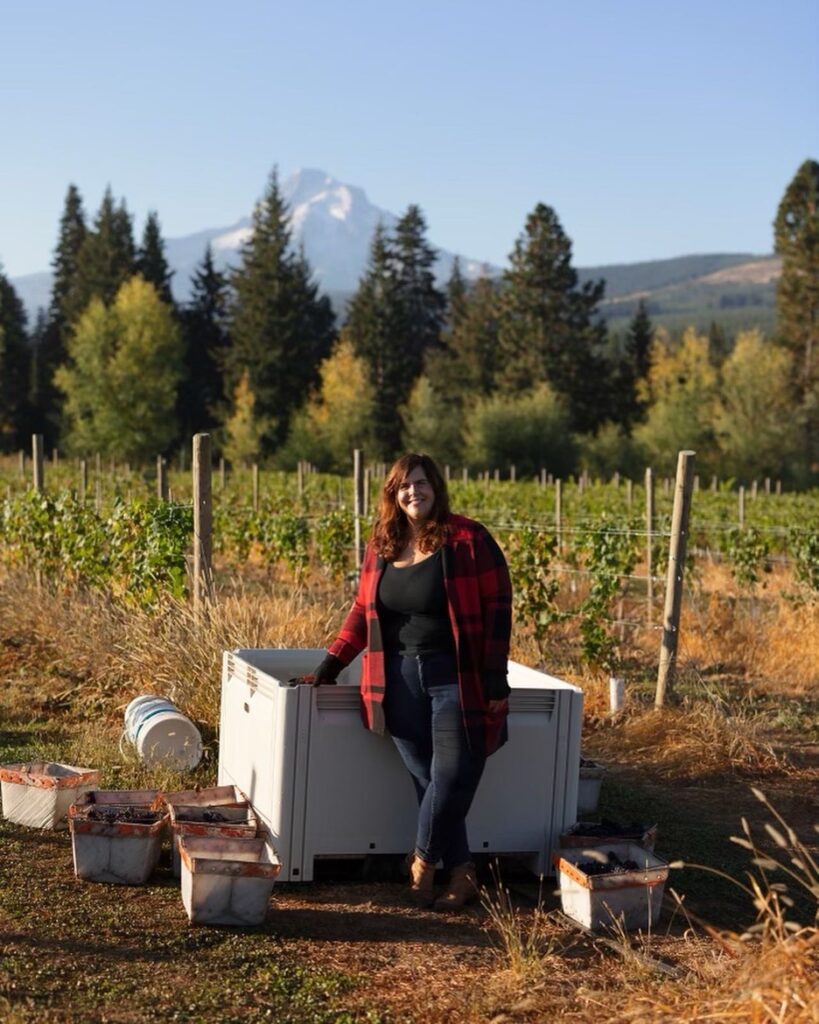
We need to ask ourselves what kind of agriculture we want to see in our community in a changing climate and economy, and what this means for farmland preservation. I worry about the integrity of our agrarian values when I see creative farmers like Trina villainized for doing something different, without getting to know her story. Exporting food may not be the best business model or use of our farmland if we truly value resilience, food security, and preserving the family farm.
 Sarah Sullivan is executive director of Gorge Grown Food Network, a nonprofit working to build an inclusive, resilient food system in the Columbia River Gorge of Oregon. Most recently, Sullivan and her staff launched one of the most robust Veggie Prescription (Rx) programs in the nation across five counties in two states with 40 health care providers. More info can be found at http://www.gorgegrown.com/foodsecurity/
Sarah Sullivan is executive director of Gorge Grown Food Network, a nonprofit working to build an inclusive, resilient food system in the Columbia River Gorge of Oregon. Most recently, Sullivan and her staff launched one of the most robust Veggie Prescription (Rx) programs in the nation across five counties in two states with 40 health care providers. More info can be found at http://www.gorgegrown.com/foodsecurity/
